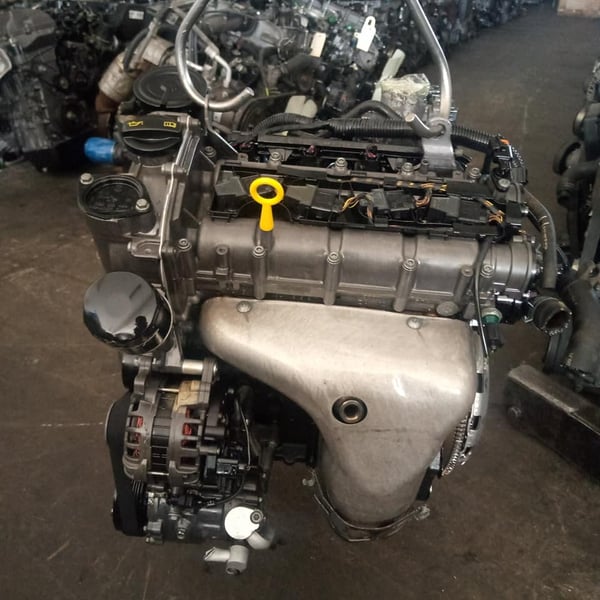Upgrade a state-of-the-art clp engine for better performance.
Upgrade a state-of-the-art clp engine for better performance.
Blog Article
Just How a Clp Engine Can Enhance Efficiency in Different Industries
The development of CLP engines marks a substantial change in operational efficiency across different fields, driven by their capacity to optimize gas intake and minimize downtime. As organizations progressively prioritize sustainability together with performance, the duty of CLP engines becomes even more vital.
Introduction of CLP Engines
CLP engines, or Constant Liquid Propellant engines, represent a substantial innovation in propulsion technology, specifically for room applications. These engines use a continuous feed system that allows for the continual expulsion of propellant, causing improved efficiency and performance compared to conventional solid or hybrid propulsion systems. By keeping a continuous flow of fluid propellant, CLP engines can accomplish more accurate thrust control, which is crucial for steering spacecraft in different goal situations.
The design of CLP engines incorporates advanced products and innovative fuel monitoring systems. clp engine. This results in lowered weight and boosted reliability, necessary elements for long-duration room objectives. In addition, the constant procedure reduces the danger of combustion instability, a common obstacle in conventional rocket engines.

Advantages in Production
The production of Constant Liquid Propellant (CLP) engines presents several notable benefits that improve both effectiveness and cost-effectiveness. One of the primary advantages is the structured production procedure, which minimizes the complexity related to conventional propulsion systems. By utilizing fluid propellant, makers can accomplish greater precision in engine efficiency, resulting in optimized power outcome and decreased waste.
Additionally, CLP engines promote a greater degree of modularity, permitting for less complicated combination right into different production lines. This flexibility can substantially lower preparations and improve total functional flexibility. Making use of CLP technology additionally has a tendency to reduce the demand for substantial maintenance as a result of fewer relocating parts, which converts right into decreased downtime and functional expenses.

Applications in Logistics
Leveraging Constant Liquid Propellant (CLP) engines in logistics uses considerable benefits in functional effectiveness and dependability. These engines supply a durable service for different transportation needs, enabling the seamless movement of items throughout substantial ranges. The intrinsic style of CLP engines permits for regular power result, which converts into smoother and much more predictable transportation timetables.
Among the crucial applications of CLP engines in logistics is in heavy-duty freight learn the facts here now transport, where they can drive both ground and aerial vehicles. Their capacity to preserve high performance under varying lots problems makes sure that shipment timelines are met, thus improving customer complete satisfaction. Furthermore, CLP engines can be integrated right into automated logistics systems, promoting real-time monitoring and optimizing course preparation.
In addition, the index resilience of CLP engines lowers upkeep downtime, allowing logistics firms to optimize their operational capacities. This is especially beneficial in warehousing procedures, where efficiency in handling and transporting products is crucial. As logistics remains to progress, the integration of CLP engines represents a forward-thinking approach that not only boosts performance yet additionally supports the sector's growing needs for reliability and rate.
Influence On Power Efficiency
Exactly How do Continual Liquid Propellant (CLP) engines boost energy performance in transportation? CLP engines use a regular flow of fluid gas, optimizing burning procedures and maintaining a stable thrust result. This design lessens power losses related to standard burning engines, where gas delivery can vary and cause inefficiencies.
The continual operation of CLP engines enables for a much more reliable thermal cycle, resulting in higher certain impulse contrasted to standard engines. clp engine. This converts to reduced fuel intake for the same amount of work done, substantially decreasing functional costs across various transportation industries, consisting of air travel and maritime industries
Furthermore, the capability of CLP engines to preserve optimum efficiency under differing lots problems lowers the demand for constant velocity and slowdown, further enhancing fuel efficiency. Improved power performance not just adds to set you back savings but likewise brings about decrease greenhouse gas exhausts, straightening with international sustainability objectives.
Future Trends and Innovations
Emerging developments in Continual Fluid Propellant (CLP) engine technology promise to change the landscape of transport effectiveness and sustainability. As markets pivot toward greener alternatives, CLP engines stand at the center, incorporating ingenious materials and style approaches that enhance efficiency while decreasing ecological impact.
Among one of the most appealing trends is the fostering of crossbreed systems that combine CLP engines with eco-friendly power resources. This harmony can maximize gas intake and minimize exhausts, aligning with global sustainability objectives. In addition, advancements in computational liquid dynamics (CFD) are facilitating the layout of more aerodynamically reliable engines, causing decreased drag and boosted gas effectiveness.
In addition, the development of wise monitoring systems is established to enhance functional efficiencies. These systems take advantage of data analytics and IoT innovation to optimize engine performance in real-time, making certain that the recommended you read engines operate within their most reliable parameters.
As research study proceeds to explore alternate propellant solutions-- such as biofuels and artificial gas-- the future of CLP engines looks appealing. By using these developments, markets can not just improve their effectiveness yet also contribute substantially to a cleaner, extra sustainable future in transportation.
Verdict
In conclusion, CLP engines represent a significant advancement in efficiency across numerous sectors. The assimilation of innovative products and less relocating parts reduces maintenance needs, while placement with sustainability objectives settings CLP engines as a critical technology for the future.
Report this page